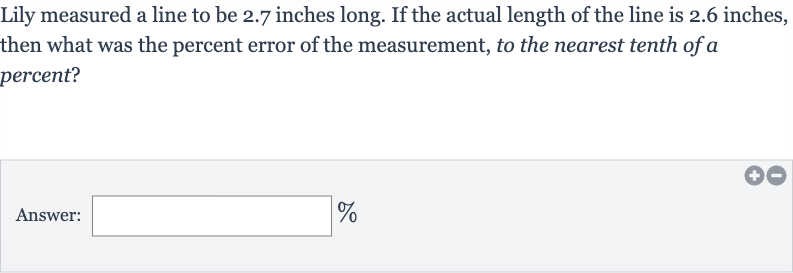AI tutor
Welcome to Bytelearn!
Let’s check out your problem:

Lily measured a line to be . inches long. If the actual length of the line is . inches, then what was the percent error of the measurement, to the nearest tenth of a percent?Answer: ________
Full solution
Q. Lily measured a line to be . inches long. If the actual length of the line is . inches, then what was the percent error of the measurement, to the nearest tenth of a percent?Answer: ________
- Understand formula: Understand the percent error formula.Percent error is calculated using the formula: Percent Error = Here, the measured value is inches, and the actual value is inches.
- Plug in values: Plug in the values into the percent error formula.Percent Error =
- Calculate absolute difference: Calculate the absolute difference between the measured value and the actual value. inches
- Divide by actual value: Divide the absolute difference by the actual value. (This is the decimal form of the percent error.)
- Convert to percentage: Convert the decimal to a percentage.
- Round to nearest tenth: Round the percent error to the nearest tenth of a percent. rounds to
More problems from Percent error: word problems
QuestionGet tutor help
QuestionGet tutor help
QuestionGet tutor help
QuestionGet tutor help
QuestionGet tutor help
